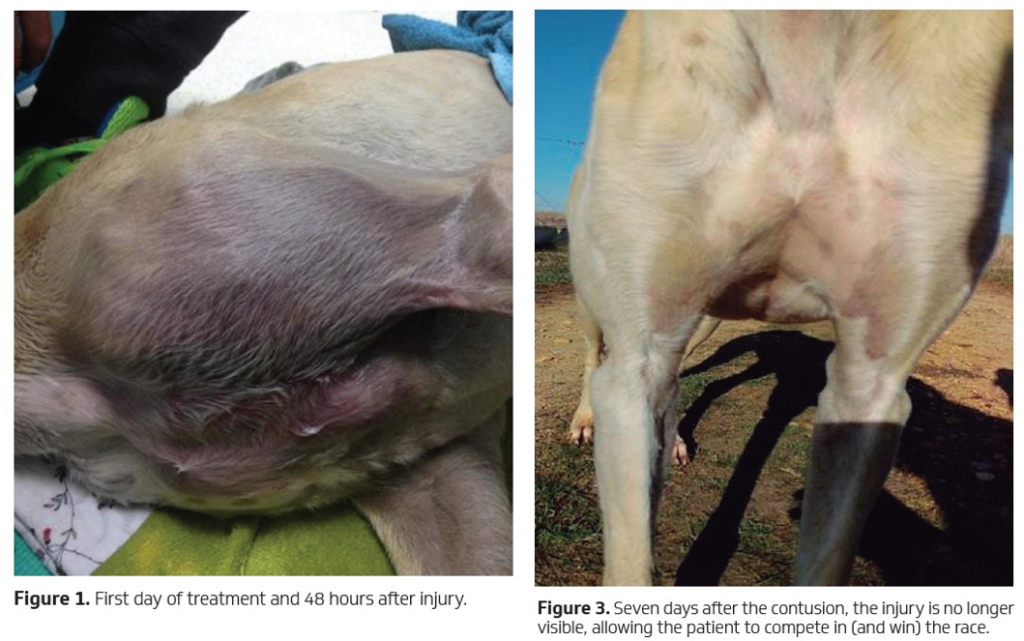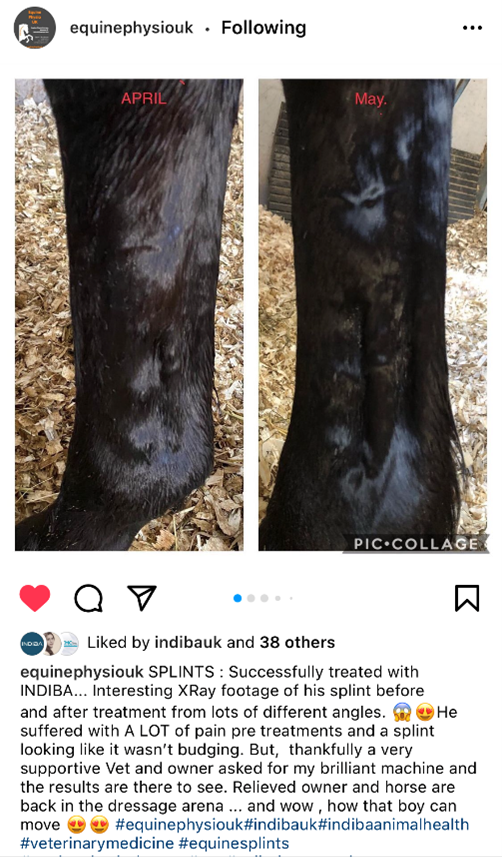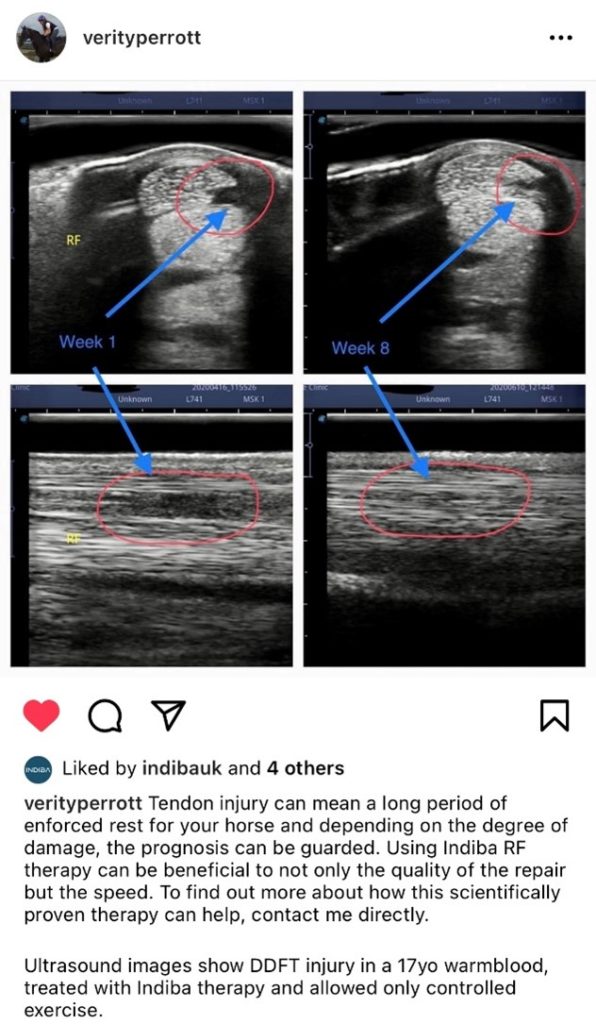Successful pain management in animals: Less medication!
Published:21 June,2021
Pain management is essential to veterinary practice. It is key for optimum recovery from illness, injury, or surgery; and, as result, enhanced quality of life of animals. In this article, we will cover the basics of pain management in animals, the pros and cons of medication, other aspects to consider, and how INDIBA can help in assessing all these points.
Disclaimer: this article was written by a veterinary professional and for veterinary professionals only. It contains a compilation of information and recommendations from veterinary associations and literature. In any case, the diagnosis and treatment plan for a disease should always be based on the veterinarians’ criteria and according to each patient.
Pain Management – the PLATTER approach
Strategy is basic when making any plan to obtain a certain objective. In this case, our objective is the successful management of pain. The AAHA and the AAFP have proposed a guideline for approaching pain in animals, called the PATTER approach1.
According to these guidelines, there are 3 key things to do:
- Signs of pain can be subtle and difficult to recognize, so detecting pain and its origin is the first step. The type of pain is also important to be determined, in order to choose the right path of treatment.
- Plan a customized pain management strategy. Treatment for pain often involves medication: for acute pain, it may include opioids, NSAIDs, corticosteroids, local anesthetics; while chronic pain is mainly managed with NSAIDs. Your plan should also include other physical treatments, such as compresses, massage, and physical therapy. Animals in pain are also stressed so, don’t forget to assess anxiety.
- Re-assess your plan at every evaluation point. Your patient is not the same as the first day, so your treatment should no be either. Adapting your plan to each stage of the recovery will make it more successful.
Types of pain:
After determining that the animal is in pain, the second step is to recognize the type of pain. The classic types are based on the length of duration1:
- Acute pain is the pain that exists during the time of inflammation and healing after injury (up to 3 months).
- Chronic pain is defined as that which exists beyond the expected duration associated with acute pain.
Other subtypes are also involved in pain and refer to the underlying cause of pain – nociceptive, inflammatory, or pathological –, which take into account other aspects than just the duration1. Determining these causes will make your treatment plan much more accurate, and therefore your outcome will be more successful.
Treating pain
After evaluating the patient and diagnosing the type and cause of pain, it is time to choose your treatment.
Acute pain treatment options:
Acute surgical, traumatic, and disease-related pain is generally treated with one or more analgesic products, whether NSAIDs, corticoids, or other types, alone or in combination, depending on the injury and the condition of the patient2.
Quick tip: did you know that INDIBA can reduce and control acute pain and inflammation quickly and without the use of medication? Keep reading!
Chronic pain treatment options:
The treatment of chronic pain is usually a combination of medication and supportive treatments. The most used medications are NSAIDs; however, other types of chronic pain require the addition of novel drugs3. In any case, chronic pain is a dynamic disease process that requires careful assessment and frequent reassessment as it evolves and should always include a holistic approach with the combination with other therapies2.
Quick tip: Did you know that INDIBA can also be used in chronic, reducing the doses of the medications or even eliminating the need of using them at all? The answer coming up!
Pain medication: Pros and Cons.
Pain medication is great at what it does: reducing pain and inflammation in a short time. In acute stages of an injury or condition, the use of analgesics, such as NSAIDs or corticoids, are not only needed but also advisable to successfully control pain and ensure the animal’s well-being.
But some animals may be more sensitive to analgesic medication or suffer from conditions where analgesics are contraindicated. As the injury or condition becomes chronic, the use of long-term pain medication can be risky and produce secondary effects, such as vomiting, decreased or no appetite, decreased activity level, and diarrhea. Other reported side effects in animals include stomach and intestinal ulcers, stomach and intestinal perforations, kidney failure, liver failure, and, in very extreme cases, death4.
How can INDIBA help?
In vet school, we are trained to treat most diseases through medication and surgery, but increasingly, evidence-based data and empirical experience justify a strong role for nonpharmacologic modalities for pain management that consider options for a more integral, individualized treatment plan.
INDIBA Animal Health is a great companion when managing pain, whether acute or chronic, due to its beneficial effects on the tissues and cells. The basis of it all is an electromagnetic current, called Radiofrequency, at the specific frequency of 448 kHz. This Radiofrequency has two main effects:
- Electrical effects from the 448 kHz frequency, which has biostimulation properties: proliferation, differentiation, and apoptotic. In other words, regeneration of healthy tissue (very important in injury repair) and elimination of bad tissue5.
- Thermal effects from the Radiofrequency (RF) itself, which comes from basic physics. When a tissue is exposed to RF, the temperature in these tissues increases from something called the Joule effect. The results from the increasing temperature in the tissue are improvement of blood flow – along with oxygen and nutrients -, drainage of fluids and metabolites and increased metabolism6,7,8.
Both combined have the following clinical benefits:
- Pain control due to the anti-inflammatory effect
- Regeneration of tissue and quicker injury recovery
- Preventive care for injuries and pain
- Long-term maintenance of chronic patients.
INDIBA’s radiofrequency is a unique technology that can treat in both acute and chronic stages and can reach deeper structures – such as the sacroiliac joint or deep paravertebral muscles –, all in one device.
Our knowledge and applications are based on clinical research and experience. And who better to tell their story than our users! Here some examples:
Dramatic pain and inflammation control – Michela Arena (Spain) – See case report

Chronic inflammation control – Sarah Robinson (UK)

Tissue repair – Verity Perrott (UK)

Regeneration and wound repair – Margarita López (Spain) – See case report

Before: week 1 | After: week 4
Getting more curious now?
It’s time for you to try INDIBA Animal Health!
Start your free trial today+.
+ Free trial, no buying commitment. Maximum 3 months. Includes full training, technical support, all accessories.
References:
- 2015 AAHA/AAFP Pain Management Guidelines for Dogs and Cats
- MSD Veterinary Manual – Pain Alliviation
- MSD Veterinary Manual – Chronic Pain
- FDA – Get the Facts about Pain Relievers for Pets
- INDIBA independent research – Visit our Scientific Literature hub
- Kumaran B., Herbland A., Watson T. Continuous-mode 448 kHz capacitive resistive monopolar radiofrequency induces greater deep blood flow changes compared to pulsed mode shortwave: a crossover study in healthy adults.
- Tashiro T.,et.al. Effect of Capacitive and Resistive electric transfer on hemoglobin saturation and tissue temperature.
- Yakota Y., et.al. Effect of Capacitive and Resistive Electric Transfer on Tissue Temperature, Muscle Flexibility, and Blood Circulation.
Read more:
News & Views
Technology
Scientific Literature
Treatments
Products